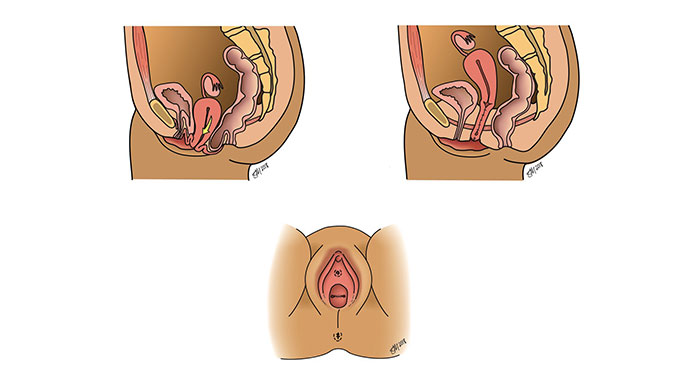Colpocleisis

What is a colpocleisis procedure?
A colpocleisis is a minimally invasive surgical procedure to treat pelvic organ prolapse. Simply, this corrects the prolapse by shortening the length of the vagina and narrowing the opening of the vagina to prevent tissue from prolapsing. For women who do not plan to have penetrative vaginal intercourse in the future, a colpocleisis has an extremely high success rate and can prevent future pelvic organ prolapse. It is also associated with a very fast recovery. A colpocleisis does not change the appearance or function of the clitoris or labia.How is it performed?
A colpocleisis is an outpatient surgical procedure performed through the vaginal opening. Because this is a relatively quick procedure, this can be performed under different types of anesthesia (spinal/regional or general anesthesia), which you will discuss with your anesthesiologist. During a colpocleisis, a urogynecologic surgeon shortens the vagina by stitching together the vaginal walls. This procedure also has the fastest recovery time and lowest surgical risk, compared with other surgeries for prolapse. This, along with the ability to be done under regional anesthesia, makes colpocleisis especially appealing to women with medical conditions that might complicate longer, more extensive surgical procedures.You can still have a colpocleisis if you’ve had a hysterectomy. In some cases, a hysterectomy can be performed at the same time as the colpocleisis procedure. If you have not undergone a hysterectomy, it is important to know that the cervix and uterus can be difficult to evaluate after a colpocleisis, which could hinder your gynecologist’s ability to diagnose problems in the future such as cancer. Your urogynecologic surgeon will discuss your gynecologic history during your surgical consultation and may order further testing to ensure the cells in your cervix and uterus are healthy prior to surgery.
It is important to know that following a colpocleisis, because the vagina is shortened and narrowed, you will not be able to have penetrative intercourse. That being said, women and couples’ express intimacy in a variety of other ways that will not be affected by a colpocleisis.
What is the success rate?
A colpocleisis is 95% effective at correcting pelvic organ prolapse and preventing recurrence, providing very high levels of satisfaction in women who undergo this procedure. Numerous clinical studies have shown that this surgery is safe, even in older women or those with other medical conditions.What are the risks unique to a colpocleisis procedure?
This procedure cannot be reversed, and vaginal penetration will not be possible after surgery.What is the recovery like?
Since this procedure is minimally invasive, patients go home the same day as surgery.Enhanced Recovery After Surgery (ERAS) Program
To help you properly heal and get back to do the activities you love, our urogynecologists have developed an Enhanced Recovery After Surgery (ERAS) Program to reduce post-operative pain, nausea and fatigue. As quality-of-life surgeons, we are passionate about restoring your quality of life, and aim to return you to the activities that you find interest in as quickly as safely possible. We allow you to resume activity as you see fit, listening to your body and its response to physical activity. However, we do ask you to refrain from sexual activity for several weeks while the stitches in your vagina heal. Most women feel back to normal within two to four weeks following surgery.
Meet Our Urogynecologists

Urogynecology and Reconstructive Pelvic Surgery

Urogynecology and Reconstructive Pelvic Surgery

Urogynecology and Reconstructive Pelvic Surgery

Urogynecology and Reconstructive Pelvic Surgery

Urogynecology and Reconstructive Pelvic Surgery
